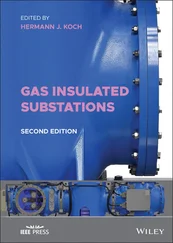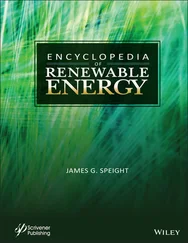The use of biomass to offset use of fossil fuels can lower greenhouse gas emissions. Burning biomass for energy does create carbon dioxide; however, the same amount of carbon dioxide is recaptured in future biomass growth. So as long as there is no carbon dioxide released into the atmosphere during production of the biomass (growth, harvest, and processing), the process sums to zero net carbon dioxide to the atmosphere. Also, if biomass is left to decompose naturally, or openly burned, a large portion of the carbon in the biomass is converted to methane (CH 4). The percentage of carbon in the biomass which is converted to methane is 50% in the case of rotting, and 5 to 10% in the case of open burning. These processes are actually worse in regard to greenhouse gas emissions than is biomass gasification, which converts nearly all of the carbon contained in the biomass to carbon dioxide, since methane is a much stronger greenhouse gas than carbon dioxide.
In general, biomass gasification plants are comparatively smaller to those of typical coal or crude oil coke plants used in the power, chemical, fertilizer and refining industries. As such, they are less expensive to build and have a smaller environmental footprint. While a large industrial gasification plant may take up 150 acres of land and process 2,500 to 15,000 tons per day of feedstock (e.g., coal or crude oil coke), smaller biomass plants typically process 25 to 200 tons of feedstock per day and take up less than 10 acres.
Finally, while biomass may seem to some observers to be the answer to the global climate change issue, advantages and disadvantages of biomass as feedstock must be considered carefully (Table 2.5). In addition, while taking the issues of global climate change into account, it must not be ignored that the Earth is in an interglacial period when warming will take place. The extent of this warming is not known – no one was around to measure the temperature change in the last interglacial period – and by the same token the contribution of anthropological sources to global climate change cannot be measured accurately.
The potential variability of biomass feedstocks, longer-term changes in refuse and the size limitation of a power plant using only waste and/or biomass can be overcome combining biomass, refuse, and coal. It also allows benefit from a premium electricity price for electricity from biomass and the gate fee associated with waste. If the power plant is gasification-based, rather than direct combustion, further benefits may be available. These include a premium price for the electricity from waste, the range of technologies available for the gas to electricity part of the process, gas cleaning prior to the main combustion stage instead of after combustion and public image, which is currently generally better for gasification as compared to combustion. These considerations lead to current studies of co-gasification of wastes/biomass with coal (Speight, 2008).
Table 2.5Advantages and disadvantages of using biomass as a gasification feedstock.
| Advantages Disadvantages |
Theoretically inexhaustible fuel source. |
| Minimal environmental impact when direct combustion of plant mass is not used to generate energy (i.e., fermentation, pyrolysis, etc., are used instead), (iii) alcohol derivatives and other fuels produced by biomass are efficient, viable, and relatively clean-burning. |
| Available on a worldwide basis. |
|
Possible adverse contribution to global climate change and particulate pollution if combusted directly. |
| Not always a cheap source of energy, both in terms of producing biomass and the conversion to alcohols or other fuels. |
| Life cycle assessments (LCA) should be taken into account to address energy inputs and outputs but there is most likely a net loss of energy when operated on a small scale which requires that energy to grow the plant mass must be taken into account. |
Waste may be municipal solid waste (MSW) which had minimal presorting, or refuse-derived fuel (RDF) with significant pretreatment, usually mechanical screening and shredding. Other more specific waste sources (excluding hazardous waste) and possibly including crude oil coke, may provide niche opportunities for co-utilization (Bridgwater, 2003; John and Singh, 2011; Arena, 2012; Speight, 2013, 2014b). The traditional waste-to-energy plant, based on mass-burn combustion on an inclined grate, has a low public acceptability despite the very low emissions achieved over the last decade with modern flue gas clean-up equipment. This has led to difficulty in obtaining planning permissions to construct needed new waste-to-energy plants. After much debate, various governments have allowed options for advanced waste conversion technologies (gasification, pyrolysis and anaerobic digestion), but will only give credit to the proportion of electricity generated from non-fossil waste.
Municipal solid waste is a readily available, low-cost fuel, with a high organic content when processed to suit the particular gasification process being used. Several plants in Japan and Europe already employ gasification technology for treatment of municipal solid waste. Metal and glass must be removed from the municipal solid waste as it is preprocessed into refuse-derived fuel in order to increase the heating value of the feedstock and avoid gasifier operational problems. In communities with recycling programs, costs associated with removing these materials will be minimized, giving waste gasification the greatest opportunity for success. The systems used for the production of refuse-derived fuel usually use a combination of size reduction, screening, magnetic separation and density separation to remove the non-combustible materials (such as metal and glass) from the municipal solid waste.
The principle behind waste gasification and the production of gaseous fuels is that waste contains carbon and it is this carbon that is converted to gaseous products via gasification chemistry. Thus when waste is fed to a gasifier, water, and volatile matter are released and a char residue is left to react further. Use of waste materials as co-gasification feedstocks may attract significant disposal credits (Ricketts et al. , 2002). Cleaner biomass materials are renewable fuels and may attract premium prices for the electricity generated. Availability of sufficient fuel locally for an economic plant size is often a major issue, as is the reliability of the fuel supply. Use of more-predictably available feedstock alongside these fuels overcomes some of these difficulties and risks. However, the issues associated with gasification of municipal solid waste include, like the gasification of any mixed feedstock, feedstock homogeneity, for many gasifiers, feedstock heterogeneity and process scale up can lead to a number of mechanical problems, shutdowns, sintering and hot spots leading to corrosion and failure of the reactor wall (most of the processes proposed for waste gasification do not include a separation process).
Furthermore, the disposal of municipal and industrial waste has become an important problem because the traditional means of disposal, landfill, are much less environmentally acceptable than previously. Much stricter regulation of these disposal methods will make the economics of waste processing for resource recovery much more favorable. One method of processing waste streams is to convert the energy value of the combustible waste into a fuel. One type of fuel attainable from waste is a low heating value gas, usually 100 to 150 Btu/scf, which can be used to generate process steam or to generate electricity. Co-processing such waste with coal is also an option (Speight, 2008, 2013a, 2014b). However, co-gasification technology varies, being usually site specific and high feedstock dependent (Ricketts et al. , 2002).
Читать дальше












